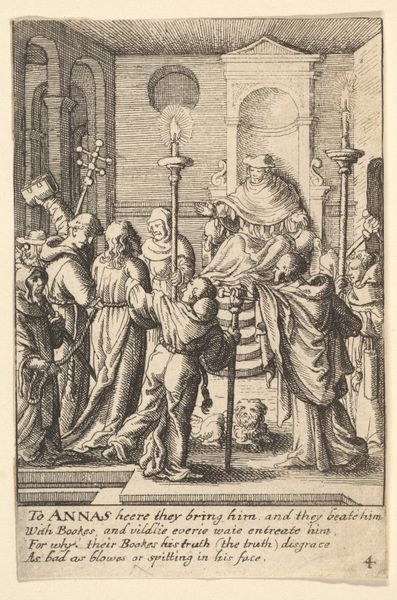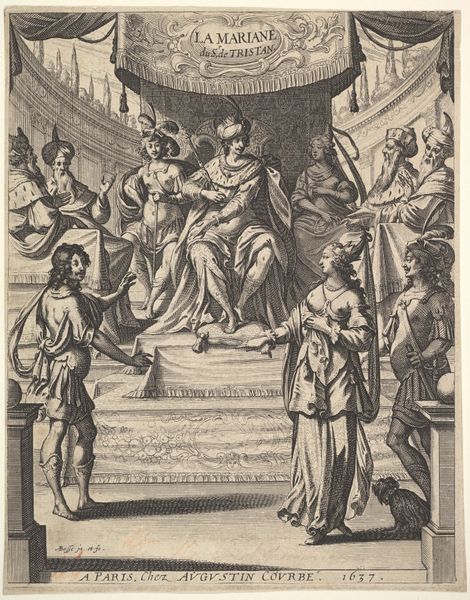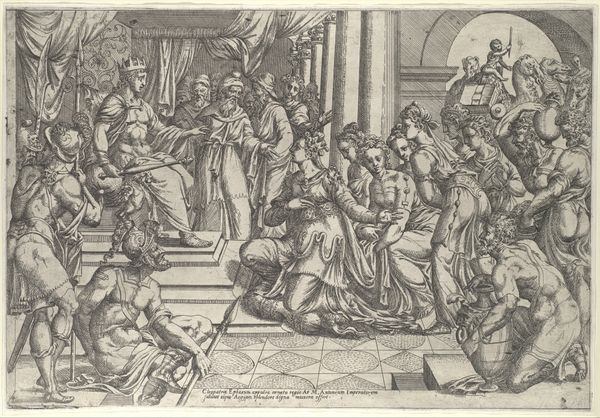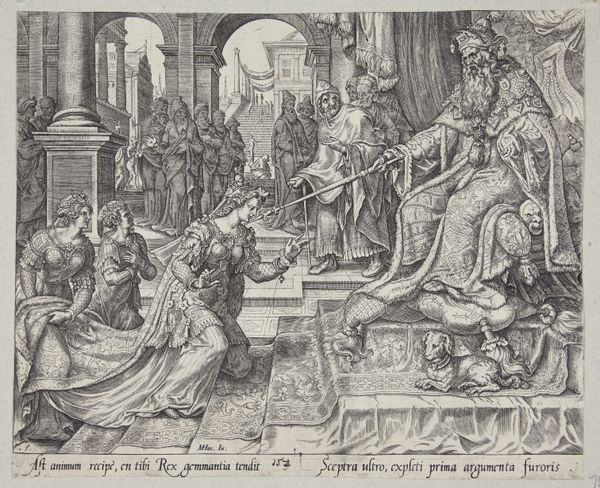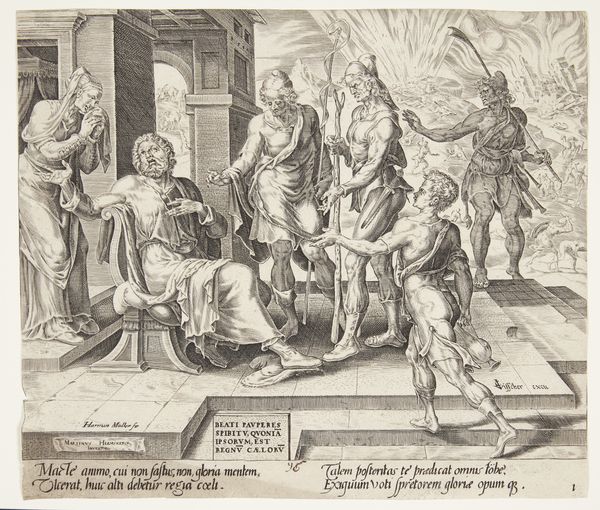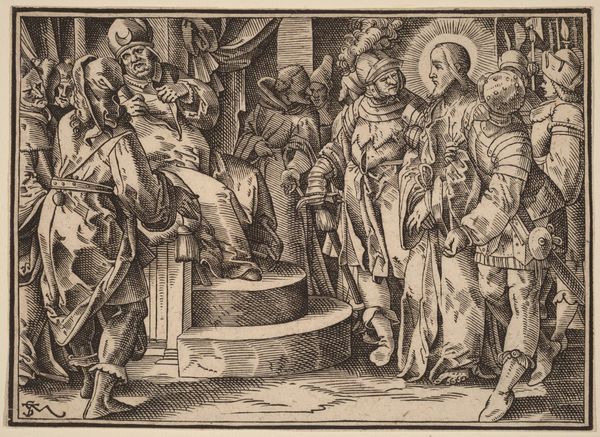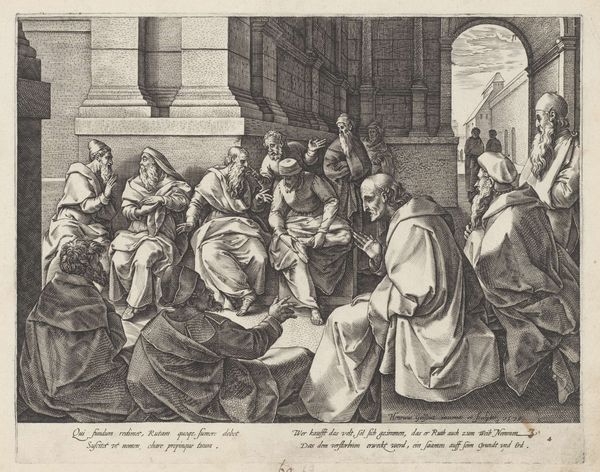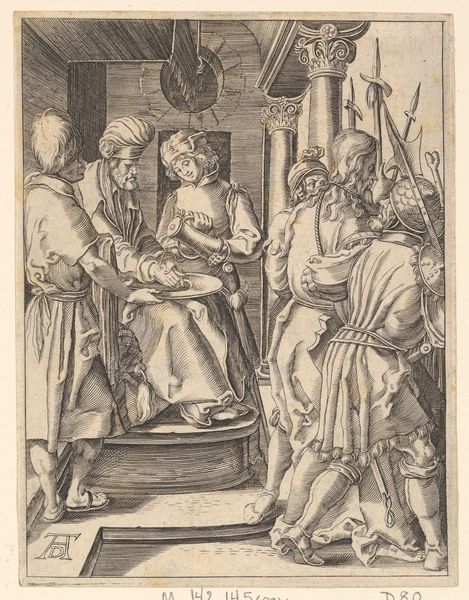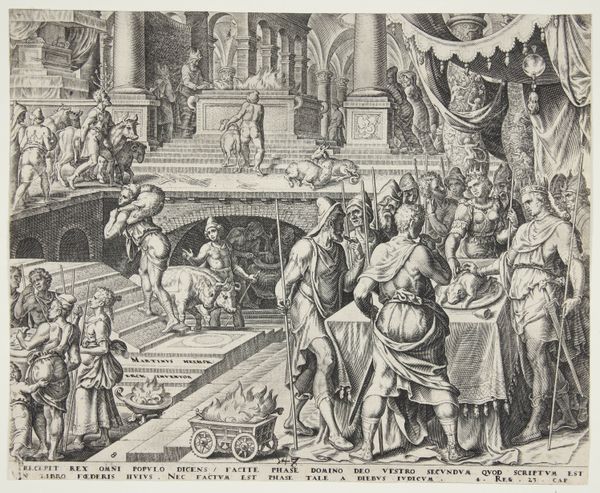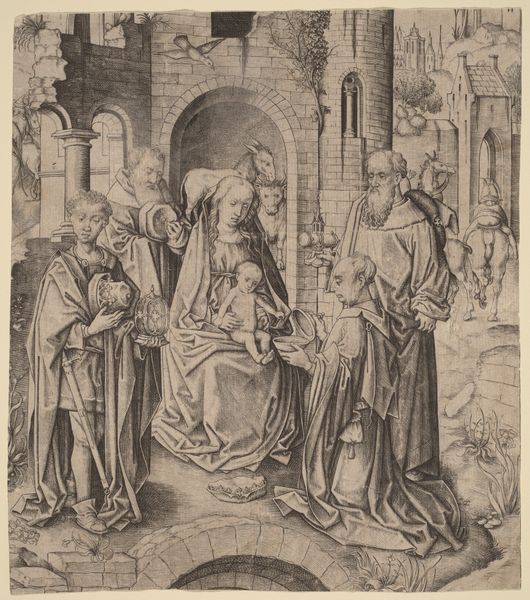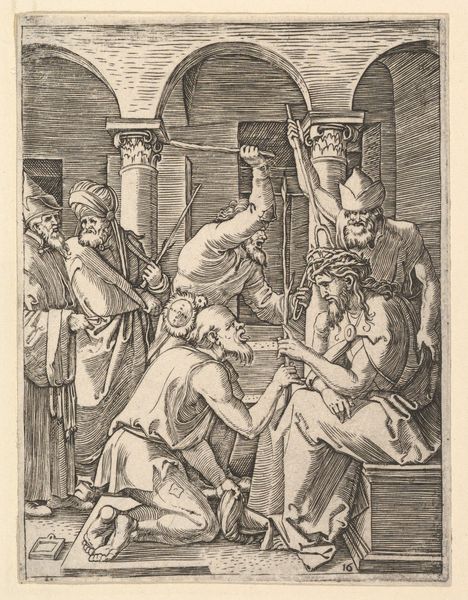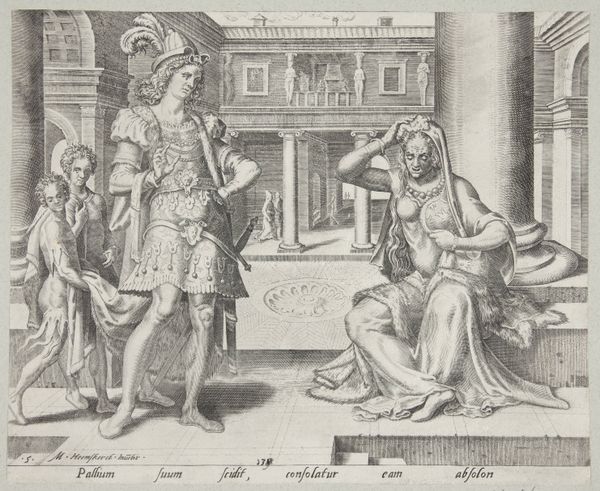
The Holy Kindred, (Virgin and Child with Joseph, Anne and Two Male Saints) (copy) 1489 - 1959
0:00
0:00
drawing, print, engraving
#
drawing
# print
#
figuration
#
madonna
#
child
#
history-painting
#
northern-renaissance
#
engraving
Dimensions: sheet: 9 1/8 x 9 3/4 in. (23.2 x 24.8 cm)
Copyright: Public Domain
Editor: So, this engraving, "The Holy Kindred," attributed to Lucas van Leyden and dating roughly from 1489 to 1959, strikes me as intensely formal. The figures seem very consciously posed. How should we be reading an image like this within its historical context? Curator: That's a great starting point. I would consider how this image, likely part of a larger series of prints, served a public function in disseminating religious ideas during the Northern Renaissance. Notice the text inscription. Editor: Yes, at the bottom, which is unusual within an artwork itself! Curator: It highlights the prophecy of the Virgin birth, making a direct connection to the viewer. Consider, too, how the print medium allowed for relatively inexpensive reproduction. Editor: So, this would allow broader audiences to access this specific biblical scene and Van Leyden’s artistic interpretation. Curator: Precisely. Think about the politics of imagery at this time; the Protestant Reformation was challenging the authority of the Catholic Church. These images reinforced traditional religious narratives but in a more personal, accessible way. Does the architectural setting itself seem significant to you? Editor: Now that you point it out, the use of such structured space draws the eye toward the subjects, the focus being their relationship together within this moment. Curator: Exactly, van Leyden deliberately used established and popularized the existing narrative to the world beyond. Editor: I hadn’t considered how printmaking impacted religious movements; very insightful. Curator: And I hadn't considered its distribution among the everyday person and accessibility due to production methods, rather than exclusively religious figures and establishments.
Comments
No comments
Be the first to comment and join the conversation on the ultimate creative platform.

